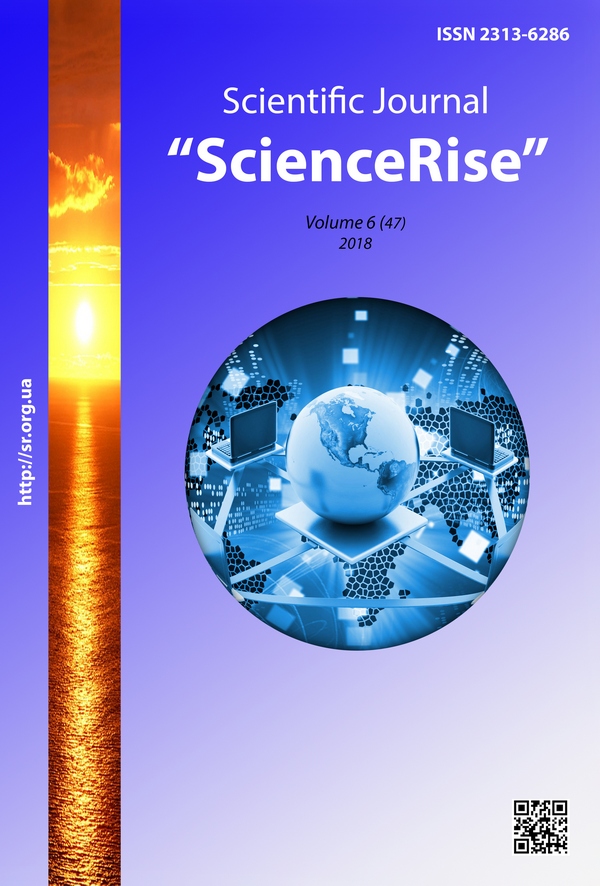Comparison of the results of the modeling of the temperature field in the process of bimetal melting by the scanning laser for the rays, which focused in the rectangle and in the circle
DOI:
https://doi.org/10.15587/2313-8416.2018.131866Keywords:
bimetal alloy, laser melting, scanning laser, temperature field, finite difference method, through calculationAbstract
The problem of numerical simulation of temperature field in the process of bimetal melting by the scanning laser for rays focusing in a rectangle and in a circle are considered. The mathematical model of the process is a boundary problem for unsteady three-dimensional nonlinear partial differential equation in the variable domain. Comparison of results of the modeling with different laser beam shape and power distribution is made according to key characteristics
References
Shmidt, M., Kuryncev, S. V. (2014). Poluchenie bimetallicheskih zagotovok s pomoshh'iu lazernoi svarki proplavnym shvom [Producing of bimetal joints by laser welding with full penetration]. Automatic Welding, 4, 47–51.
Golovko, L. F. (2008). Application of laser technology for sintering of the tool composites containing diamonds. Automatic Welding, 8 (664), 15–23.
Golovko, L. F., Lukianenko, S. O., Mykhailova, I. Yu., Tretiak, V. A. (2015). Kompiuterne modeliuvannia u lazernykh tekhnolohiiakh [Computer simulation in laser technology]. Kyiv: VPP "Tekst", 236.
Golovko, L. F. (2012). Mozhlivostі pіdvishchennia iakostі znosostіikikh pokrittіv zastosuvanniam lazernogo opromіnennia [Possibilities of improving the quality of wear-resistant coatings using laser irradiation]. Herald of Khmelnytskyi national university, 1, 20–28.
Grabowski, A., Formanek, B., Sozanska, B. M. (2009). Laser remelting of Al-Fe-TiO powder composite on aluminium matrix. Journal of Acheivements in Materials and Manufacturing Engineering, 1 (33), 78–85.
Kalvand, A. (2009). Osobennosti processov plavleniia-zatverdevaniia pri pogruzhenii blokov v rasplav vysokotemperaturnogo koriuma [Perculiarities of the melting-solidification processes by sinking of the melting blocks into high-temperature corium melt]. Nuclear Physics and Atomic Energy, 10 (2), 178–184.
Pereloma, V. A., Likhoshva, V. P., Shatrava, A. P., Skripka, N. N. (1998). Nekotorye osobennosti lazernoi obrabotki metallicheskikh materialov [Some features of laser processing of metallic materials]. Casting Processes, 3-4, 9–16.
Verhoeven, J. C. J., Jansen, J. K. M., Mattheij, R. M. M., Smith, W. R. (2003). Modelling laser induced melting. Mathematical and Computer Modelling, 37 (3-4), 419–437. doi: http://dx.doi.org/10.1016/s0895-7177(03)00017-7
Marchuk, G. I. (1988). Metody rasshchepleniia [Splitting methods]. Moscow: Nauka, 264.
Tretiak, V. A. (2012). Usovershenstvovanie adaptivnogo metoda postroeniia setok dlia zadach teploprovodnosti s nestatcionarnym istochnikom energii [Improvement of the adaptive method for constructing grids for heat conduction problems with a nonstationary energy source]. Mathematical and computer modelling. Series: Technical sciences, 7, 197–206.
Downloads
Published
Issue
Section
License
Copyright (c) 2018 Oksana Perekipska, Valery Tretyak, Anna Ostapenko

This work is licensed under a Creative Commons Attribution 4.0 International License.
Our journal abides by the Creative Commons CC BY copyright rights and permissions for open access journals.
Authors, who are published in this journal, agree to the following conditions:
1. The authors reserve the right to authorship of the work and pass the first publication right of this work to the journal under the terms of a Creative Commons CC BY, which allows others to freely distribute the published research with the obligatory reference to the authors of the original work and the first publication of the work in this journal.
2. The authors have the right to conclude separate supplement agreements that relate to non-exclusive work distribution in the form in which it has been published by the journal (for example, to upload the work to the online storage of the journal or publish it as part of a monograph), provided that the reference to the first publication of the work in this journal is included.

